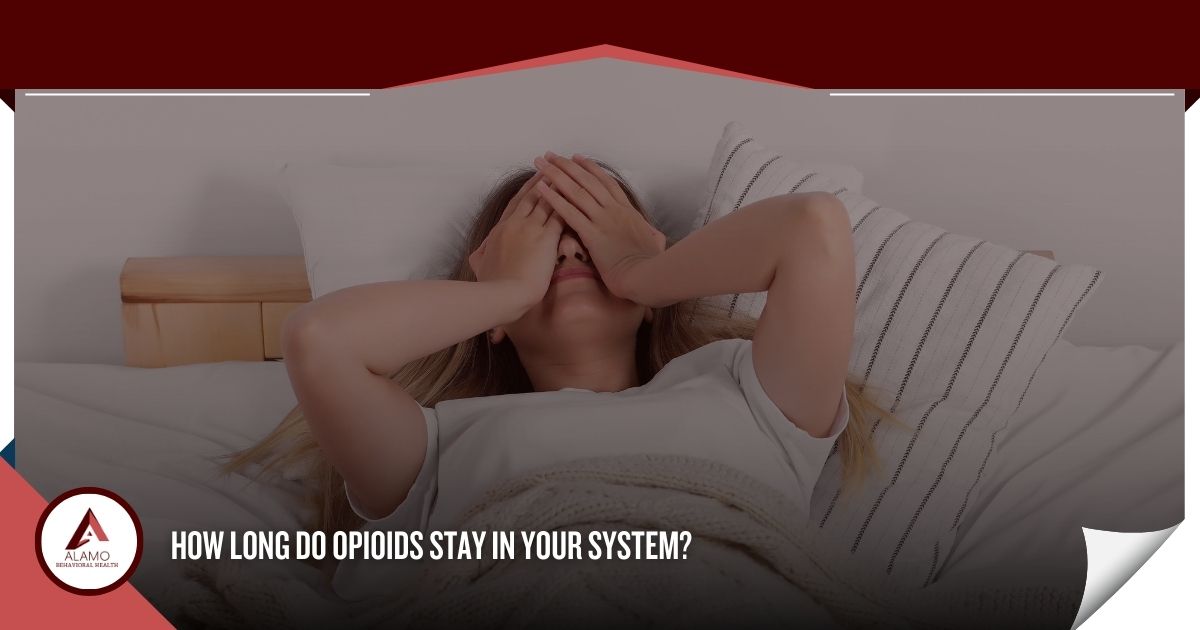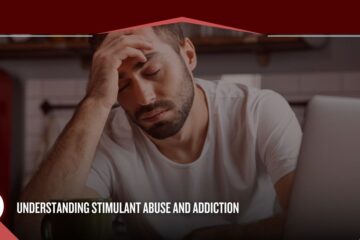Opioids are highly addictive drugs. In 2021, an estimated 5.0 million people were addicted to prescription opioids.[1] People may quickly develop opioid addiction after misusing these potent drugs for a short period. Many people become physically dependent on opioids after misusing a prescription painkiller. Some develop opioid use disorder after experimenting with illegal drugs.
People with opioid addiction typically experience brutally uncomfortable withdrawal symptoms if they stop using opioids abruptly. Comprehensive treatment and ongoing support are essential to avoiding relapse.
In this article, we will explore the opioid detox process. You will learn:
- Common opioid withdrawal symptoms
- How long opioid detox can last
- How long opioids remain in your system
- What to expect during detox treatment
- Where to find comprehensive detox support
Reach out to the Alamo Behavioral Health specialists now to explore your treatment options or to schedule an intake evaluation.
What are Opioids?
Opioids are a classification of drugs consisting of illicit and prescription drugs. People using any type of opioid may quickly develop symptoms of physical dependence.[2]
Many people develop opioid addiction after using prescription painkillers. Doctors may prescribe synthetic opioid drugs to help people manage chronic pain or stay comfortable after surgery. While doctors typically prescribe these drugs for short periods, people may still develop physical dependence on them. The American Medical Association (AMA) estimates that 3-19% of people who take prescription pain medications develop a substance use disorder.[3]
Common prescription opioid drugs include:
- Codeine
- Fentanyl
- Hydrocodone
- Hydromorphone
- Meperidine
- Oxycodone
- Oxymorphone
- Tramadol
Opioids work by binding to receptors in the brain. These drugs affect parts of the brain involved with emotional regulation, pleasure, and pain management. They cause the brain to release dopamine, a brain chemical related to pleasure and reward.[4]
The way opioids work makes them addictive. People who use opioids for any length of time must watch for signs of addiction and seek treatment as quickly as possible.
Opioid Withdrawal Symptoms
When someone develops opioid addiction and then stops taking opioids, they are likely to experience a range of physical and psychological withdrawal symptoms.
Opioid withdrawal symptoms are rarely dangerous or life-threatening. However, they can make people so uncomfortable that they are at significant risk of relapse.
How Long Does Opioid Detox Last?
Many factors can influence how long opioid detox lasts, including:
- How long a person uses opioids
- What kinds of opioids the person uses
- General health
- Metabolism
- The dose of opioids the person used
Typically, withdrawal symptoms develop within 8 to 24 hours of the last dose of opioids. However, misusing long-acting opioids can delay the start of withdrawal symptoms.[5] For example, people with methadone addiction may not experience symptoms for up to 36 hours after their last dose.
Withdrawal symptoms typically peak within the first three days of detox. Physical and psychological symptoms can make people feel miserable. The risk of relapse is high, and people need significant supervision and support to remain sober.
Symptoms generally begin to resolve within two weeks after the last dose of opioids. People may start to feel more comfortable, but treatment and support are still essential for long-term recovery.
How Long Do Opioids Remain in Your System?
Opioids begin to leave the system as soon as they reach your bloodstream. Your body metabolizes opioids and eliminates them through different bodily systems. Opioids may still be present in your body long after the drugs’ effects wear off.
There are several types of drug tests to detect opioids in your body. Here is an overview of the detection windows of various drug tests.
Urine tests
Urine tests are the most common type of drug screening. It is an accessible and affordable way to screen for drugs. They can detect opioids in urine for 2-4 days.[5] The detection window may be longer for those who use high doses or long-acting drugs.
Blood tests
Blood tests can typically detect opioids for about 12 hours. However, the detection window may be longer for chronic opioid users.
Saliva tests
Saliva testing can generally detect opioids for 24-28 hours after your last use.
Hair tests
Hair testing is uncommon but has the longest detection window. Hair testing may be able to detect opioids for up to 90 days after your last dose.
If you or someone you love are concerned about passing a drug test, you may need treatment for opioid use disorder. Don’t wait for an addiction to become life-threatening before getting help. Find the treatment you need as soon as you recognize a problem.
What to Expect During Opioid Detox Treatment
For most with opioid use disorder, recovery begins in an opioid detox treatment program. Opioid detox programs can help people safely stop using opioids, including both illicit and prescription drugs.
During detox, you will receive treatment and support to help you have a safe, complete detox. Your treatment may include:
- Medications to manage withdrawal symptoms
- Mental health treatment
- Emotional support
- A secure environment
- Round-the-clock access to treatment and support
Participating in a detox program can help you safely stop using opioids. Then, you must participate in a comprehensive treatment program to develop the ability to prevent relapse.
Find an Opioid Detox Program Now
Opioid addiction can impact every part of your life. Don’t settle for the life opioid addiction chooses for you. Begin your recovery journey by contacting the specialists at Alamo Behavioral Health today.
References:
- National Institute on Drug Abuse (NIDA): What is the scope of prescription drug misuse in the United States?
- National Institute on Drug Abuse (NIDA): Opioids
- American Psychiatric Association (APA): Opioid Use Disorder
- National Institutes of Health (NIH): The Neurobiology of Opioid Dependence: Implications for Treatment
- National Institutes of Health (NIH): Opioid Withdrawal





